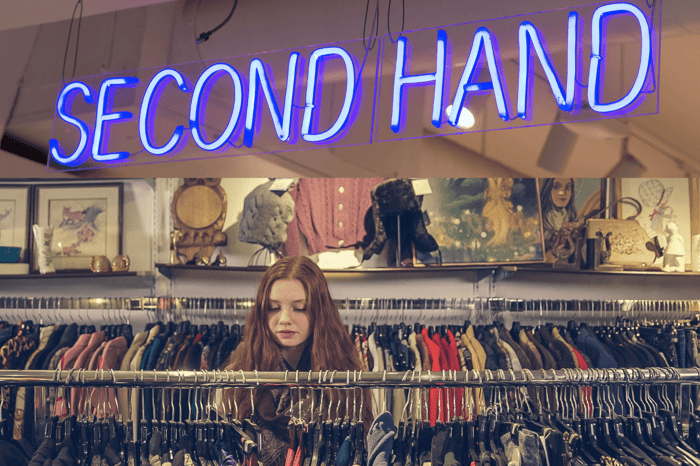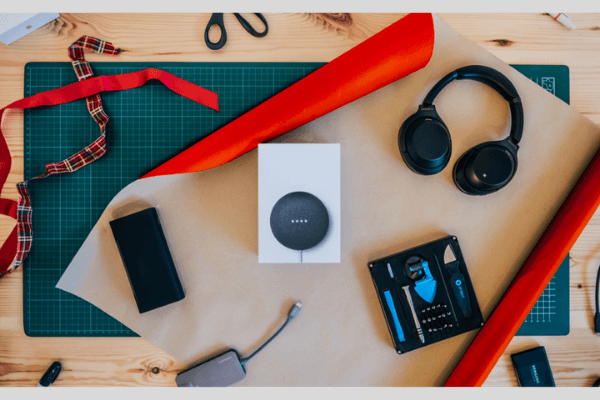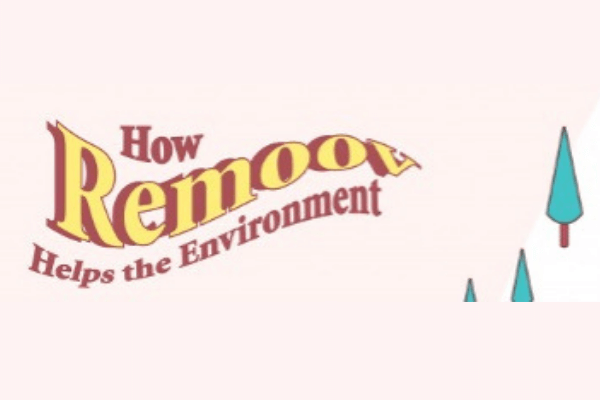Hot Tips For Secondhand Shopping: Buying Gently Used Items In-person Or Online
With secondhand shopping on the rise, we thought it would be handy to provide a guide to all things gently loved. New 2022 data has proven that shopping for gently used, previously loved and secondhand items is bigger than ever and growing at a rapid pace for a few reasons but mainly via recession fears, environmental sustainability, and social media influence. Outpacing retail shopping, the benefits of purchasing secondhand are numerous and advantageous to not only you but also our planet. It’s a way to acquire designer looks and name brand everything at great discounts. Secondhand shopping tips here will cover everything from appliances to zebras (the stuffed toy version that is!).
 Benefits of Buying Secondhand
Benefits of Buying Secondhand
- Saves Money- Secondhand goods are mostly offered at steep discounts compared to the same new version.
- Environmentally Friendly- all sorts of resources go into the production of products. From physical labor to energy, raw materials, and other natural resources that deplete our environment (oil, metals, forests, soil, water). For instance, did you know it takes 1,800 gallons of water on average to make a pair of jeans?
- Less landfill population. Clothes and household goods are the largest contributors to trash heaps.
- Less energy waste.
- Less pollution (toxic chemicals, pesticides, fuel for shipping, and other carbon emissions).
- Buying secondhand means you’re not causing a demand for new items that need further energy or deplete additional natural resources.
- Less landfill population. Clothes and household goods are the largest contributors to trash heaps.
- No Packaging- buying secondhand means zero additional trash associated with new product packaging.
- Local Business Support- keeping your money in your local community is vital for a healthy economy. Stop supporting big business and think about your local consignment shop, estate sale, neighborhood online social media group, or farmer’s market down the street.
- Treasure Hunting- secondhand shops hold many treasures of the world. From vintage costumes to rare books, fine art, family jewelry, musical wonders, and prizes of all sorts. Buying new means owning what everyone else does. Want unique? Shop secondhand.
- Choose appliances with big price points, such as refrigerators and gas ranges.
- Choose appliances that have long lifespans (20+ years).
- Choose appliances that need little repair (washer and dryer, refrigerator).
- Secondhand options like these are the most cost-effective.
- Test before purchasing!
- Rely on a trusted secondhand provider.
This is an important topic and covers a wide range of devices that many of us rely on for daily productive use. Check out the full guide HERE on all things related to secondhand electronics. Summary of tips:
- Check the power cord- is it frayed; are the prongs straight, etc.
- Does the device have the type of ports you need (HDMI, USB, Ethernet, etc.)?
- Check the battery to make sure it’s not cracked or misshaped.
- Wireless- see if it connects to local Wifi.
- Speed and memory- make sure the device that you’re getting can run the software and other apps you want to use as well as have enough memory to hold them all.
- Test before buying!
Buying gently used furniture makes such a huge positive impact on our environment, your health (no off-gassing), and your wallet. It’s an excellent way to curate a themed decor design for a fraction of the cost. Check out these great tips.
- Upcycle- there are hundreds of creative ways to take used furniture pieces and turn them into something new for the home. Keep these types of projects in mind when doing your secondhand shopping.
- Paint & refresh- painted furniture can be a gorgeous thing. Love the style, size, and shape of a chest of drawers but the color is all wrong for your Shabby Chic home. Reupholster a set of dining chairs to fit perfectly into your Asian inspired home.
- Haggle- hot tip: don’t be afraid to make an offer. It can’t hurt to ask.
- Furniture Hacks Eco-Friendly- this guide offers a round of great tips to explore.
- Measure the space for your furniture piece before you shop. It’s a downer when you find a gorgeous leather sectional but it’s too big for the living room you have.
- Double measure- don’t forget height, width, and depth.
- Test it before you bring it home (especially if there’s a no return policy). Sit in a chair or on a sofa for more than a few minutes to make sure it's comfortable. Open dresser drawers; test the strength of shelving in cabinets.
- Know quality versus crap- focus on integrity versus surface scratches or dens that can be fixed. Is it made from particle board or is it solid wood? Is the padding misshapen, or durable?
- Do a nose test- if your secondhand fabric furniture smells, give it a pass.
- Can you transport it? If your secondhand store doesn’t deliver, are you able to move your new furniture find home? (The Local Flea in San Francisco, Phoenix, and Miami all deliver).
Want to reduce your carbon footprint and save at the same time? Secondhand fashion shopping is perfect for you! Secondhand sellers have all the hidden gems and vintage treasures these days. It is now a multibillion-dollar industry and there are dozens of online (and don’t forget all your local shops) sellers to choose from. Here are your secondhand shopping tips for gently used fashion.
- Have an idea in mind- Want a little black dress; need a pair of winter boots; or want to add some summer clothes for a beach vacation, whatever your goal have one before you start browsing or you’re likely to end up in a deep fashion rabbit hole.
- Use creative search words- if you’re not finding what you’re looking for when shopping for fashion online, try using different language in your search. Cowhide versus leather. Sparkly versus diamonds. Retro versus 1950 skirt.
- Shop in opposite seasons- it’s not as fun and instantly gratifying but shopping for your winter needs in summer and vice versa will provide a larger range of selections at deeper discounts. This is a true PRO TIP!
- Measurements & sizing-when buying vintage, best to get one to two sizes larger. Our sizes these days are larger than they were in the past. It’s best to know your measurements before shopping. What’s the length that a top hits your body shape perfectly? Is it 20”? Does 22” hit your small tummy bulge? Know your body, know your measurements.
- If shopping in person, (versus online) wear easy-to-slip-on and off clothes and shoes for quick outfit changes in the dressing room.
- Venture outside your comfort zone- we gravitate towards what we love. But do you really need another gray skirt or a tenth black blouse? Know your wardrobe and look afield.
- Check the item from top to bottom for stains and tears. If you find something wrong and you don’t have a plan to fix it right away (sew a missing button on this weekend), give it a pass or ask for a deeper discount.
 BONUS AWARENESS -Fast Fashion’s Devastating Impact
BONUS AWARENESS -Fast Fashion’s Devastating Impact
The endless production of cheap clothing, labeled “fast fashion”, is choking our world. This unsustainable practice needs to end. Some fast fashion facts:
- Fast fashion is responsible for 10% of humanity’s carbon emissions.
- Many fast fashion brands use child labor, have awful working conditions, and do not pay fair wages.
- 85% of textiles just end up in landfills.
- Over 30% of the microplastics in the ocean come from synthetic fabrics. These plastic microfibers leach into the ground and waterways, causing pollution and the risk of being consumed by wildlife and marine life.
- Fast fashion is the cause of 20% of water pollution worldwide.
 DO YOU KNOW ABOUT PRODUCT OVERFLOW?
DO YOU KNOW ABOUT PRODUCT OVERFLOW?
Overflow of products is a common occurrence at donation locations, forcing store owners to throw away perfectly good items.
- In 2012, 84 percent of all apparel that was donated to thrift stores and donation centers ended up incinerated or in a dump, according to the Environmental Protection Agency.
- In California Goodwill spends $7 million on dumping unwanted items.
- If the secondhand market continues to grow, it would mean more items being salvaged as demand increases. This is a good thing!
- Moral of the story, buy more fashion from your secondhand markets!
 A SECONDHAND GREEN LEADER
A SECONDHAND GREEN LEADER
There is a leader in this secondhand tsunami: The Local Flea. THE LOCAL FLEA is a huge showroom style shop for all the gently used items from Remoov’s pickup service, reselling all those unwanted items to the public at huge discounts. From high-quality name-brand home and office furniture to electronics, art, appliances, sporting goods, and so much more, make sure to keep The Local Flea at the top of your list when choosing to buy secondhand. Online and in-person shopping is available in San Francisco, Phoenix, and Miami.
Additional resource: Second-Hand: Sustainability & Shopping Smartly In a Tight Economy
#fastfashion #slowfashion #sustainablefashion #sustainability #secondhand #sustainableliving #modafeminina #fashionrevolution #sustainable #ethicalfashion #trend #ecofriendly #zerowaste #environment #recycle #climatechange #handmade #ecofashion #reuse #fashionindustry #outfit #thrift #streetwear #secondhandfashion #onlineshopping #fastfashionsucks #fair #buylocal #shopping #trendy #doitfair #locallyproduced #localshopping #thinkgreen #fairshopping #tlf #remoov #recommerce #prelovedbranded #reuse #secondhandshopping












